政安晨:【Keras机器学习示例演绎】(五十四)—— 使用神经决策森林进行分类
目录
导言
数据集
设置
准备数据
定义数据集元数据
为训练和验证创建 tf_data.Dataset 对象
创建模型输入
输入特征编码
深度神经决策树
深度神经决策森林
实验 1:训练决策树模型
实验 2:训练森林模型
政安晨的个人主页:政安晨
欢迎 👍点赞✍评论⭐收藏
收录专栏: TensorFlow与Keras机器学习实战
希望政安晨的博客能够对您有所裨益,如有不足之处,欢迎在评论区提出指正!
本文目标:如何为深度神经网络的端到端学习训练可微分决策树。
导言
本示例提供了 P. Kontschieder 等人提出的用于结构化数据分类的深度神经决策林模型的实现。 它演示了如何建立一个随机可变的决策树模型,对其进行端到端训练,并将决策树与深度表示学习统一起来。
数据集
本示例使用加州大学欧文分校机器学习资料库提供的美国人口普查收入数据集。 该数据集包含 48,842 个实例,其中有 14 个输入特征(如年龄、工作级别、教育程度、职业等): 5 个数字特征和 9 个分类特征。
设置
import keras
from keras import layers
from keras.layers import StringLookup
from keras import opsfrom tensorflow import data as tf_data
import numpy as np
import pandas as pdimport math准备数据
CSV_HEADER = ["age","workclass","fnlwgt","education","education_num","marital_status","occupation","relationship","race","gender","capital_gain","capital_loss","hours_per_week","native_country","income_bracket",
]train_data_url = ("https://archive.ics.uci.edu/ml/machine-learning-databases/adult/adult.data"
)
train_data = pd.read_csv(train_data_url, header=None, names=CSV_HEADER)test_data_url = ("https://archive.ics.uci.edu/ml/machine-learning-databases/adult/adult.test"
)
test_data = pd.read_csv(test_data_url, header=None, names=CSV_HEADER)print(f"Train dataset shape: {train_data.shape}")
print(f"Test dataset shape: {test_data.shape}")Train dataset shape: (32561, 15)
Test dataset shape: (16282, 15)删除第一条记录(因为它不是一个有效的数据示例)和类标签中的尾部 "点"。
test_data = test_data[1:]
test_data.income_bracket = test_data.income_bracket.apply(lambda value: value.replace(".", "")
)我们将训练数据和测试数据分割成 CSV 文件存储在本地。
train_data_file = "train_data.csv"
test_data_file = "test_data.csv"train_data.to_csv(train_data_file, index=False, header=False)
test_data.to_csv(test_data_file, index=False, header=False)定义数据集元数据
在此,我们定义了数据集的元数据,这些元数据将有助于读取、解析和编码输入特征。
# A list of the numerical feature names.
NUMERIC_FEATURE_NAMES = ["age","education_num","capital_gain","capital_loss","hours_per_week",
]
# A dictionary of the categorical features and their vocabulary.
CATEGORICAL_FEATURES_WITH_VOCABULARY = {"workclass": sorted(list(train_data["workclass"].unique())),"education": sorted(list(train_data["education"].unique())),"marital_status": sorted(list(train_data["marital_status"].unique())),"occupation": sorted(list(train_data["occupation"].unique())),"relationship": sorted(list(train_data["relationship"].unique())),"race": sorted(list(train_data["race"].unique())),"gender": sorted(list(train_data["gender"].unique())),"native_country": sorted(list(train_data["native_country"].unique())),
}
# A list of the columns to ignore from the dataset.
IGNORE_COLUMN_NAMES = ["fnlwgt"]
# A list of the categorical feature names.
CATEGORICAL_FEATURE_NAMES = list(CATEGORICAL_FEATURES_WITH_VOCABULARY.keys())
# A list of all the input features.
FEATURE_NAMES = NUMERIC_FEATURE_NAMES + CATEGORICAL_FEATURE_NAMES
# A list of column default values for each feature.
COLUMN_DEFAULTS = [[0.0] if feature_name in NUMERIC_FEATURE_NAMES + IGNORE_COLUMN_NAMES else ["NA"]for feature_name in CSV_HEADER
]
# The name of the target feature.
TARGET_FEATURE_NAME = "income_bracket"
# A list of the labels of the target features.
TARGET_LABELS = [" <=50K", " >50K"]为训练和验证创建 tf_data.Dataset 对象
我们创建了一个输入函数来读取和解析文件,并将特征和标签转换为 tf_data.Dataset 用于训练和验证。 我们还通过将目标标签映射到索引对输入进行预处理。
target_label_lookup = StringLookup(vocabulary=TARGET_LABELS, mask_token=None, num_oov_indices=0
)lookup_dict = {}
for feature_name in CATEGORICAL_FEATURE_NAMES:vocabulary = CATEGORICAL_FEATURES_WITH_VOCABULARY[feature_name]# Create a lookup to convert a string values to an integer indices.# Since we are not using a mask token, nor expecting any out of vocabulary# (oov) token, we set mask_token to None and num_oov_indices to 0.lookup = StringLookup(vocabulary=vocabulary, mask_token=None, num_oov_indices=0)lookup_dict[feature_name] = lookupdef encode_categorical(batch_x, batch_y):for feature_name in CATEGORICAL_FEATURE_NAMES:batch_x[feature_name] = lookup_dict[feature_name](batch_x[feature_name])return batch_x, batch_ydef get_dataset_from_csv(csv_file_path, shuffle=False, batch_size=128):dataset = (tf_data.experimental.make_csv_dataset(csv_file_path,batch_size=batch_size,column_names=CSV_HEADER,column_defaults=COLUMN_DEFAULTS,label_name=TARGET_FEATURE_NAME,num_epochs=1,header=False,na_value="?",shuffle=shuffle,).map(lambda features, target: (features, target_label_lookup(target))).map(encode_categorical))return dataset.cache()
创建模型输入
def create_model_inputs():inputs = {}for feature_name in FEATURE_NAMES:if feature_name in NUMERIC_FEATURE_NAMES:inputs[feature_name] = layers.Input(name=feature_name, shape=(), dtype="float32")else:inputs[feature_name] = layers.Input(name=feature_name, shape=(), dtype="int32")return inputs输入特征编码
def encode_inputs(inputs):encoded_features = []for feature_name in inputs:if feature_name in CATEGORICAL_FEATURE_NAMES:vocabulary = CATEGORICAL_FEATURES_WITH_VOCABULARY[feature_name]# Create a lookup to convert a string values to an integer indices.# Since we are not using a mask token, nor expecting any out of vocabulary# (oov) token, we set mask_token to None and num_oov_indices to 0.value_index = inputs[feature_name]embedding_dims = int(math.sqrt(lookup.vocabulary_size()))# Create an embedding layer with the specified dimensions.embedding = layers.Embedding(input_dim=lookup.vocabulary_size(), output_dim=embedding_dims)# Convert the index values to embedding representations.encoded_feature = embedding(value_index)else:# Use the numerical features as-is.encoded_feature = inputs[feature_name]if inputs[feature_name].shape[-1] is None:encoded_feature = keras.ops.expand_dims(encoded_feature, -1)encoded_features.append(encoded_feature)encoded_features = layers.concatenate(encoded_features)return encoded_features深度神经决策树
神经决策树模型有两组权重需要学习。 第一组是 pi,代表树叶中类别的概率分布。 第二组是路由层 decision_fn 的权重,代表前往每个树叶的概率。 该模型的前向传递工作原理如下:
该模型希望将输入特征作为一个单一的向量,对批次中某个实例的所有特征进行编码。 该向量可以由应用于图像的卷积神经网络(CNN)生成,也可以由应用于结构化数据特征的密集变换生成。
模型首先应用已用特征掩码随机选择要使用的输入特征子集。
然后,模型通过在树的各个层级迭代执行随机路由,计算输入实例到达树叶的概率(mu)。
最后,将到达树叶的概率与树叶上的类概率相结合,生成最终输出。
class NeuralDecisionTree(keras.Model):def __init__(self, depth, num_features, used_features_rate, num_classes):super().__init__()self.depth = depthself.num_leaves = 2**depthself.num_classes = num_classes# Create a mask for the randomly selected features.num_used_features = int(num_features * used_features_rate)one_hot = np.eye(num_features)sampled_feature_indices = np.random.choice(np.arange(num_features), num_used_features, replace=False)self.used_features_mask = ops.convert_to_tensor(one_hot[sampled_feature_indices], dtype="float32")# Initialize the weights of the classes in leaves.self.pi = self.add_weight(initializer="random_normal",shape=[self.num_leaves, self.num_classes],dtype="float32",trainable=True,)# Initialize the stochastic routing layer.self.decision_fn = layers.Dense(units=self.num_leaves, activation="sigmoid", name="decision")def call(self, features):batch_size = ops.shape(features)[0]# Apply the feature mask to the input features.features = ops.matmul(features, ops.transpose(self.used_features_mask)) # [batch_size, num_used_features]# Compute the routing probabilities.decisions = ops.expand_dims(self.decision_fn(features), axis=2) # [batch_size, num_leaves, 1]# Concatenate the routing probabilities with their complements.decisions = layers.concatenate([decisions, 1 - decisions], axis=2) # [batch_size, num_leaves, 2]mu = ops.ones([batch_size, 1, 1])begin_idx = 1end_idx = 2# Traverse the tree in breadth-first order.for level in range(self.depth):mu = ops.reshape(mu, [batch_size, -1, 1]) # [batch_size, 2 ** level, 1]mu = ops.tile(mu, (1, 1, 2)) # [batch_size, 2 ** level, 2]level_decisions = decisions[:, begin_idx:end_idx, :] # [batch_size, 2 ** level, 2]mu = mu * level_decisions # [batch_size, 2**level, 2]begin_idx = end_idxend_idx = begin_idx + 2 ** (level + 1)mu = ops.reshape(mu, [batch_size, self.num_leaves]) # [batch_size, num_leaves]probabilities = keras.activations.softmax(self.pi) # [num_leaves, num_classes]outputs = ops.matmul(mu, probabilities) # [batch_size, num_classes]return outputs深度神经决策森林
神经决策森林模型由一组同时训练的神经决策树组成。 森林模型的输出是各树的平均输出。
class NeuralDecisionForest(keras.Model):def __init__(self, num_trees, depth, num_features, used_features_rate, num_classes):super().__init__()self.ensemble = []# Initialize the ensemble by adding NeuralDecisionTree instances.# Each tree will have its own randomly selected input features to use.for _ in range(num_trees):self.ensemble.append(NeuralDecisionTree(depth, num_features, used_features_rate, num_classes))def call(self, inputs):# Initialize the outputs: a [batch_size, num_classes] matrix of zeros.batch_size = ops.shape(inputs)[0]outputs = ops.zeros([batch_size, num_classes])# Aggregate the outputs of trees in the ensemble.for tree in self.ensemble:outputs += tree(inputs)# Divide the outputs by the ensemble size to get the average.outputs /= len(self.ensemble)return outputs最后,让我们来设置训练和评估模型的代码。
learning_rate = 0.01
batch_size = 265
num_epochs = 10def run_experiment(model):model.compile(optimizer=keras.optimizers.Adam(learning_rate=learning_rate),loss=keras.losses.SparseCategoricalCrossentropy(),metrics=[keras.metrics.SparseCategoricalAccuracy()],)print("Start training the model...")train_dataset = get_dataset_from_csv(train_data_file, shuffle=True, batch_size=batch_size)model.fit(train_dataset, epochs=num_epochs)print("Model training finished")print("Evaluating the model on the test data...")test_dataset = get_dataset_from_csv(test_data_file, batch_size=batch_size)_, accuracy = model.evaluate(test_dataset)print(f"Test accuracy: {round(accuracy * 100, 2)}%")实验 1:训练决策树模型
在本实验中,我们使用所有输入特征训练一个神经决策树模型。
num_trees = 10
depth = 10
used_features_rate = 1.0
num_classes = len(TARGET_LABELS)def create_tree_model():inputs = create_model_inputs()features = encode_inputs(inputs)features = layers.BatchNormalization()(features)num_features = features.shape[1]tree = NeuralDecisionTree(depth, num_features, used_features_rate, num_classes)outputs = tree(features)model = keras.Model(inputs=inputs, outputs=outputs)return modeltree_model = create_tree_model()
run_experiment(tree_model)Start training the model...
Epoch 1/10123/123 ━━━━━━━━━━━━━━━━━━━━ 5s 26ms/step - loss: 0.5308 - sparse_categorical_accuracy: 0.8150
Epoch 2/10123/123 ━━━━━━━━━━━━━━━━━━━━ 1s 11ms/step - loss: 0.3476 - sparse_categorical_accuracy: 0.8429
Epoch 3/10123/123 ━━━━━━━━━━━━━━━━━━━━ 1s 11ms/step - loss: 0.3312 - sparse_categorical_accuracy: 0.8478
Epoch 4/10123/123 ━━━━━━━━━━━━━━━━━━━━ 1s 11ms/step - loss: 0.3247 - sparse_categorical_accuracy: 0.8495
Epoch 5/10123/123 ━━━━━━━━━━━━━━━━━━━━ 1s 10ms/step - loss: 0.3202 - sparse_categorical_accuracy: 0.8512
Epoch 6/10123/123 ━━━━━━━━━━━━━━━━━━━━ 1s 11ms/step - loss: 0.3158 - sparse_categorical_accuracy: 0.8536
Epoch 7/10123/123 ━━━━━━━━━━━━━━━━━━━━ 1s 11ms/step - loss: 0.3116 - sparse_categorical_accuracy: 0.8572
Epoch 8/10123/123 ━━━━━━━━━━━━━━━━━━━━ 1s 11ms/step - loss: 0.3071 - sparse_categorical_accuracy: 0.8608
Epoch 9/10123/123 ━━━━━━━━━━━━━━━━━━━━ 1s 11ms/step - loss: 0.3026 - sparse_categorical_accuracy: 0.8630
Epoch 10/10123/123 ━━━━━━━━━━━━━━━━━━━━ 1s 10ms/step - loss: 0.2975 - sparse_categorical_accuracy: 0.8653
Model training finished
Evaluating the model on the test data...62/62 ━━━━━━━━━━━━━━━━━━━━ 1s 13ms/step - loss: 0.3279 - sparse_categorical_accuracy: 0.8463
Test accuracy: 85.08%实验 2:训练森林模型
在本实验中,我们使用 num_trees 树训练神经决策森林,每棵树随机使用 50%的输入特征。 通过设置 used_features_rate 变量,可以控制每棵树使用的特征数量。 此外,与之前的实验相比,我们将深度设置为 5,而不是 10。
num_trees = 25
depth = 5
used_features_rate = 0.5def create_forest_model():inputs = create_model_inputs()features = encode_inputs(inputs)features = layers.BatchNormalization()(features)num_features = features.shape[1]forest_model = NeuralDecisionForest(num_trees, depth, num_features, used_features_rate, num_classes)outputs = forest_model(features)model = keras.Model(inputs=inputs, outputs=outputs)return modelforest_model = create_forest_model()run_experiment(forest_model)Start training the model...
Epoch 1/10123/123 ━━━━━━━━━━━━━━━━━━━━ 47s 202ms/step - loss: 0.5469 - sparse_categorical_accuracy: 0.7915
Epoch 2/10123/123 ━━━━━━━━━━━━━━━━━━━━ 1s 10ms/step - loss: 0.3459 - sparse_categorical_accuracy: 0.8494
Epoch 3/10123/123 ━━━━━━━━━━━━━━━━━━━━ 1s 10ms/step - loss: 0.3268 - sparse_categorical_accuracy: 0.8523
Epoch 4/10123/123 ━━━━━━━━━━━━━━━━━━━━ 1s 10ms/step - loss: 0.3195 - sparse_categorical_accuracy: 0.8524
Epoch 5/10123/123 ━━━━━━━━━━━━━━━━━━━━ 1s 10ms/step - loss: 0.3149 - sparse_categorical_accuracy: 0.8539
Epoch 6/10123/123 ━━━━━━━━━━━━━━━━━━━━ 1s 10ms/step - loss: 0.3112 - sparse_categorical_accuracy: 0.8556
Epoch 7/10123/123 ━━━━━━━━━━━━━━━━━━━━ 1s 10ms/step - loss: 0.3079 - sparse_categorical_accuracy: 0.8566
Epoch 8/10123/123 ━━━━━━━━━━━━━━━━━━━━ 1s 9ms/step - loss: 0.3050 - sparse_categorical_accuracy: 0.8582
Epoch 9/10123/123 ━━━━━━━━━━━━━━━━━━━━ 1s 9ms/step - loss: 0.3021 - sparse_categorical_accuracy: 0.8595
Epoch 10/10123/123 ━━━━━━━━━━━━━━━━━━━━ 1s 9ms/step - loss: 0.2992 - sparse_categorical_accuracy: 0.8617
Model training finished
Evaluating the model on the test data...62/62 ━━━━━━━━━━━━━━━━━━━━ 5s 39ms/step - loss: 0.3145 - sparse_categorical_accuracy: 0.8503
Test accuracy: 85.55%
相关文章:

政安晨:【Keras机器学习示例演绎】(五十四)—— 使用神经决策森林进行分类
目录 导言 数据集 设置 准备数据 定义数据集元数据 为训练和验证创建 tf_data.Dataset 对象 创建模型输入 输入特征编码 深度神经决策树 深度神经决策森林 实验 1:训练决策树模型 实验 2:训练森林模型 政安晨的个人主页:政安晨 欢…...

洞察消费者心理:Transformer模型在消费者行为分析的创新应用
洞察消费者心理:Transformer模型在消费者行为分析的创新应用 在数字化时代,消费者行为分析对于企业理解市场动态、制定营销策略至关重要。Transformer模型,以其在处理序列数据方面的优势,为消费者行为分析提供了新的视角和工具。…...

如何安全使用代理ip
1、选择可靠的代理服务提供商:选择知名的、信誉良好的代理服务提供商,避免使用免费的代理服务,因为免费的代理服务可能存在安全隐患。 2、使用HTTPS代理:使用HTTPS代理可以加密你的网络流量,保护你的隐私和安全。 3、…...

机器学习——LR、GBDT、SVM、CNN、DNN、RNN、Word2Vec等模型的原理和应用
LR(逻辑回归) 原理: 逻辑回归模型(Logistic Regression, LR)是一种广泛应用于分类问题的统计方法,尤其适用于二分类问题。其核心思想是通过Sigmoid函数将线性回归模型的输出映射到(0,1)区间,从…...

揭秘SQL Server数据库选项:性能与行为的调控者
揭秘SQL Server数据库选项:性能与行为的调控者 在SQL Server的世界中,数据库选项是那些可以调整以优化数据库性能和行为的设置。它们是数据库管理员和开发者的得力助手,通过精细调控,可以显著提升数据库的响应速度和资源利用率。…...
】)
【排序 - 选择排序优化版(利用堆排序)】
结合选择排序和堆排序的思路,可以通过利用堆数据结构来优化选择排序的过程,使得排序算法更加高效。在这种结合中,我们利用堆的特性来快速定位和选择未排序部分的最小元素,避免了选择排序中每次线性搜索的开销。 选择排序和堆排序…...

PHP编程开发工具有哪些?
PHP的开发工具种类繁多,涵盖了从集成开发环境(IDE)、代码编辑器、调试器到版本控制工具和数据库管理工具等多个方面。以下是一些常见的PHP开发工具: 1. 集成开发环境(IDE) PhpStorm:由JetBrai…...
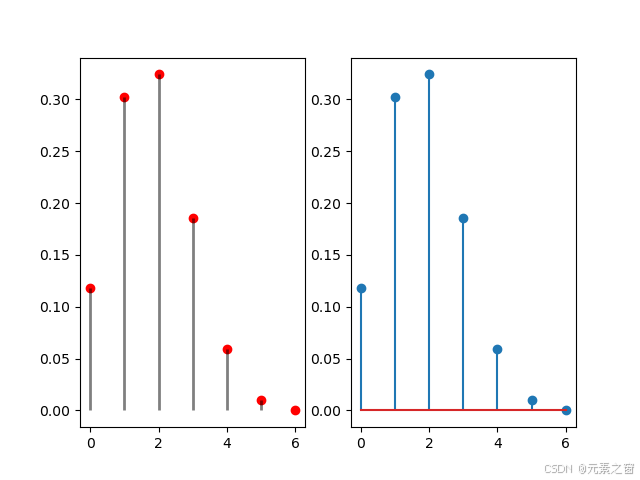
火柴棒图python绘画
使用Python绘制二项分布的概率质量函数(PMF) 在这篇博客中,我们将探讨如何使用Python中的scipy库和matplotlib库来绘制二项分布的概率质量函数(PMF)。二项分布是统计学中常见的离散概率分布,描述了在固定次…...

Nginx七层(应用层)反向代理:UWSGI代理uwsgi_pass篇
Nginx七层(应用层)反向代理 UWSGI代理uwsgi_pass篇 - 文章信息 - Author: 李俊才 (jcLee95) Visit me at CSDN: https://jclee95.blog.csdn.netMy WebSite:http://thispage.tech/Email: 291148484163.com. Shenzhen ChinaAddress of this a…...

Effective C++笔记之二十一:One Definition Rule(ODR)
ODR细节有点复杂,跨越各种情况。基本内容如下: ●普通(非模板)的noninline函数和成员函数、noninline全局变量、静态数据成员在整个程序中都应当只定义一次。 ●class类型(包括structs和unions)、模板&…...

探索未来:Transformer模型在智能环境监测的革命性应用
探索未来:Transformer模型在智能环境监测的革命性应用 在当今数字化时代,环境监测正逐渐从传统的人工检测方式转变为智能化、自动化的系统。Transformer模型,作为深度学习领域的一颗新星,其在自然语言处理(NLP&#x…...

Nginx中文URL请求404
这两天正在搞我的静态网站。方案是:从思源笔记Markdown笔记,用MkOcs build成静态网站,上传到到Nginx服务器。遇到一个问题:URL含有中文会404,全英文URL则正常访问。 比如: 设置了utf-8 ht…...
介绍)
33. 动量法(Momentum)介绍
1. 背景知识 在深度学习的优化过程中,梯度下降法(Gradient Descent, GD)是最基本的方法。然而,基本的梯度下降法在实际应用中存在收敛速度慢、容易陷入局部最小值以及在高维空间中振荡较大的问题。为了解决这些问题,人…...

Python | Leetcode Python题解之第228题汇总区间
题目: 题解: class Solution:def summaryRanges(self, nums: List[int]) -> List[str]:def f(i: int, j: int) -> str:return str(nums[i]) if i j else f{nums[i]}->{nums[j]}i 0n len(nums)ans []while i < n:j iwhile j 1 < n …...

物联网应用,了解一点 WWAN全球网络标准
WWAN/蜂窝无线电认证,对跨地区应用场景,特别重要。跟随全球业务的脚步,我们像大唐先辈一样走遍全球业务的时候,了解一点全球化的 知识信息,就显得有那么点意义。 NA (北美):美国和加…...
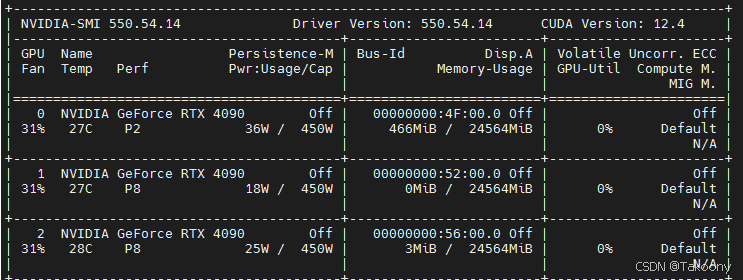
如何指定多块GPU卡进行训练-数据并行
训练代码: train.py import torch import torch.nn as nn import torch.optim as optim from torch.utils.data import DataLoader, Dataset import torch.nn.functional as F# 假设我们有一个简单的文本数据集 class TextDataset(Dataset):def __init__(self, te…...

RK3568笔记三十三: helloworld 驱动测试
若该文为原创文章,转载请注明原文出处。 报着学习态度,接下来学习驱动是如何使用的,从简单的helloworld驱动学习起。 开始编写第一个驱动程序—helloworld 驱动。 一、环境 1、开发板:正点原子的ATK-DLRK3568 2、系统…...

【智能制造-14】机器视觉软件
CCD相机和COMS相机? CCD(Charge-Coupled Device)相机和CMOS(Complementary Metal-Oxide-Semiconductor)相机是两种常见的数字图像传感器技术,用于捕捉和处理图像。 CCD相机: CCD相机使用一种称为CCD的光电…...
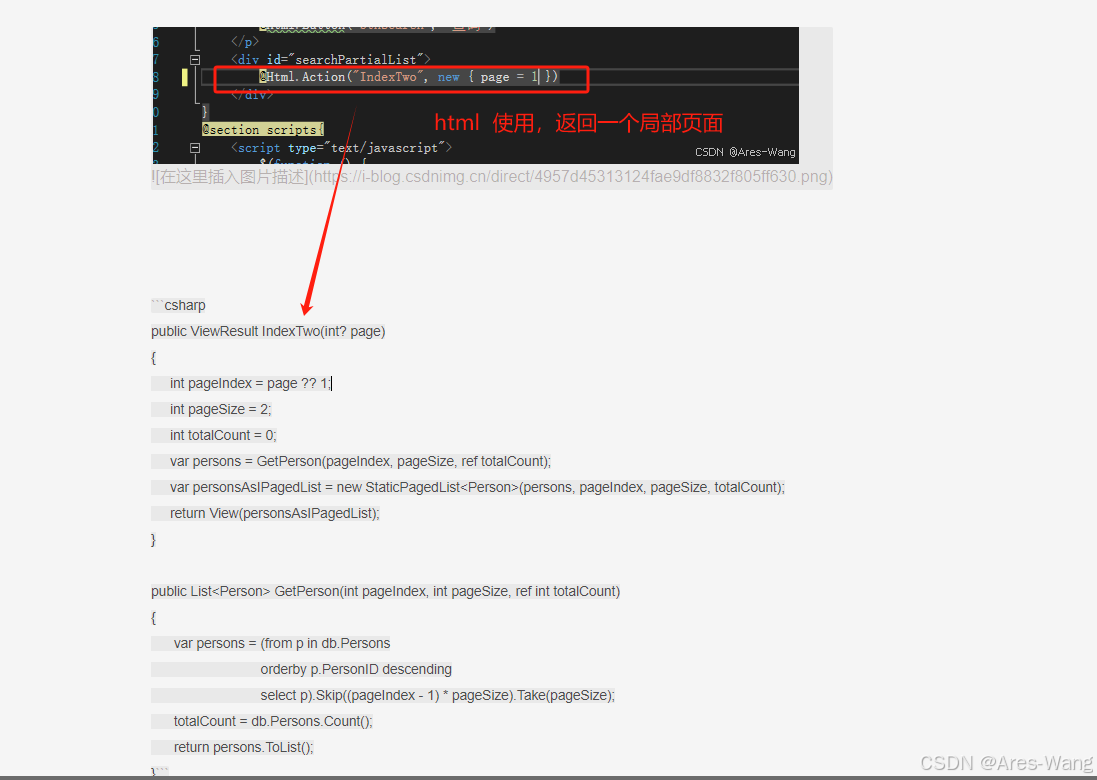
MVC分页
public ActionResult Index(int ? page){IPagedList<EF.ACCOUNT> userPagedList;using (EF.eMISENT content new EF.eMISENT()){第几页int pageNumber page ?? 1;每页数据条数,这个可以放在配置文件中int pageSize 10;//var infoslist.C660List.OrderBy(…...

webGL可用的14种3D文件格式,但要具体问题具体分析。
hello,我威斯数据,你在网上看到的各种炫酷的3d交互效果,背后都必须有三维文件支撑,就好比你网页的时候,得有设计稿源文件一样。WebGL是一种基于OpenGL ES 2.0标准的3D图形库,可以在网页上实现硬件加速的3D图…...

synchronized 学习
学习源: https://www.bilibili.com/video/BV1aJ411V763?spm_id_from333.788.videopod.episodes&vd_source32e1c41a9370911ab06d12fbc36c4ebc 1.应用场景 不超卖,也要考虑性能问题(场景) 2.常见面试问题: sync出…...

unix/linux,sudo,其发展历程详细时间线、由来、历史背景
sudo 的诞生和演化,本身就是一部 Unix/Linux 系统管理哲学变迁的微缩史。来,让我们拨开时间的迷雾,一同探寻 sudo 那波澜壮阔(也颇为实用主义)的发展历程。 历史背景:su的时代与困境 ( 20 世纪 70 年代 - 80 年代初) 在 sudo 出现之前,Unix 系统管理员和需要特权操作的…...

三体问题详解
从物理学角度,三体问题之所以不稳定,是因为三个天体在万有引力作用下相互作用,形成一个非线性耦合系统。我们可以从牛顿经典力学出发,列出具体的运动方程,并说明为何这个系统本质上是混沌的,无法得到一般解…...

【OSG学习笔记】Day 16: 骨骼动画与蒙皮(osgAnimation)
骨骼动画基础 骨骼动画是 3D 计算机图形中常用的技术,它通过以下两个主要组件实现角色动画。 骨骼系统 (Skeleton):由层级结构的骨头组成,类似于人体骨骼蒙皮 (Mesh Skinning):将模型网格顶点绑定到骨骼上,使骨骼移动…...
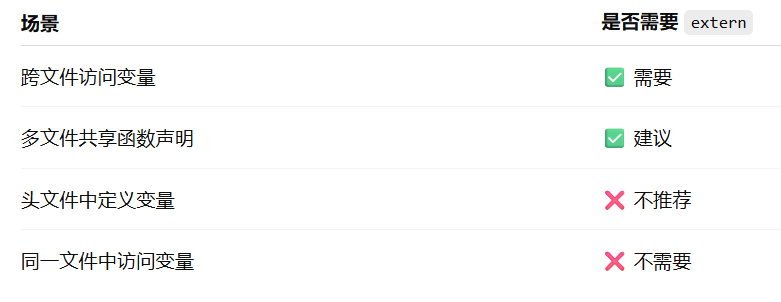
深入解析C++中的extern关键字:跨文件共享变量与函数的终极指南
🚀 C extern 关键字深度解析:跨文件编程的终极指南 📅 更新时间:2025年6月5日 🏷️ 标签:C | extern关键字 | 多文件编程 | 链接与声明 | 现代C 文章目录 前言🔥一、extern 是什么?&…...

【HTTP三个基础问题】
面试官您好!HTTP是超文本传输协议,是互联网上客户端和服务器之间传输超文本数据(比如文字、图片、音频、视频等)的核心协议,当前互联网应用最广泛的版本是HTTP1.1,它基于经典的C/S模型,也就是客…...

高防服务器能够抵御哪些网络攻击呢?
高防服务器作为一种有着高度防御能力的服务器,可以帮助网站应对分布式拒绝服务攻击,有效识别和清理一些恶意的网络流量,为用户提供安全且稳定的网络环境,那么,高防服务器一般都可以抵御哪些网络攻击呢?下面…...
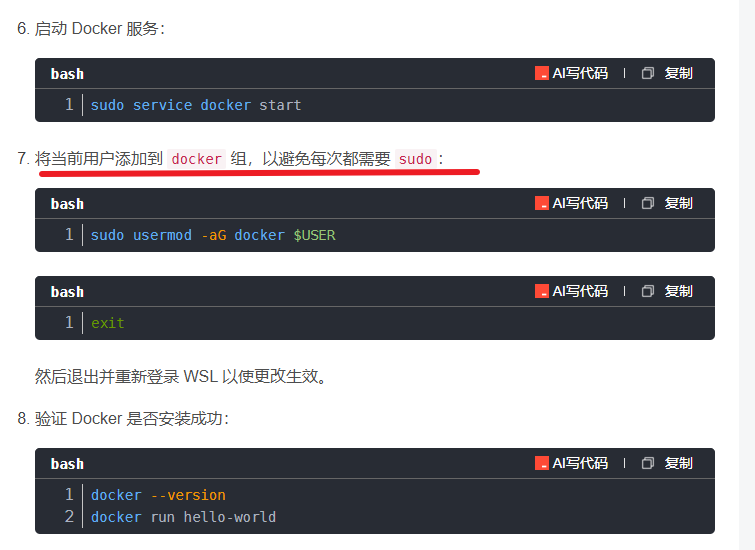
在WSL2的Ubuntu镜像中安装Docker
Docker官网链接: https://docs.docker.com/engine/install/ubuntu/ 1、运行以下命令卸载所有冲突的软件包: for pkg in docker.io docker-doc docker-compose docker-compose-v2 podman-docker containerd runc; do sudo apt-get remove $pkg; done2、设置Docker…...

学校时钟系统,标准考场时钟系统,AI亮相2025高考,赛思时钟系统为教育公平筑起“精准防线”
2025年#高考 将在近日拉开帷幕,#AI 监考一度冲上热搜。当AI深度融入高考,#时间同步 不再是辅助功能,而是决定AI监考系统成败的“生命线”。 AI亮相2025高考,40种异常行为0.5秒精准识别 2025年高考即将拉开帷幕,江西、…...

基于SpringBoot在线拍卖系统的设计和实现
摘 要 随着社会的发展,社会的各行各业都在利用信息化时代的优势。计算机的优势和普及使得各种信息系统的开发成为必需。 在线拍卖系统,主要的模块包括管理员;首页、个人中心、用户管理、商品类型管理、拍卖商品管理、历史竞拍管理、竞拍订单…...
